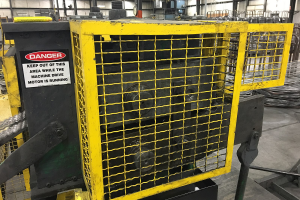The ‘new’ OSHA uses an old policy to make an example of employers
Over past years, in a limited number of cases, OSHA has alleged a separate violation and proposed a separate penalty for each instance of non-compliance with OSHA recordkeeping regulations, safety and health standards and with the general duty clause.
The resulting large aggregate penalties are part of a strategy which OSHA believes improves the efficiency and effectiveness of the agency and conserves its limited resources by making an example of the employers who are cited. In non-egregious cases, OSHA issues one violation for all instances of the same hazard, and as a result the proposed penalties are much smaller than egregious penalties.
OSHA has revived the strategy and is issuing many more so-called “egregious” citations, including two instances last week that resulted in large proposed fines in Connecticut and Wisconsin. The question is whether those violations will hold up if the employers choose to litigate them.
According to OSHA, the violation-by-violation citations are not primarily punitive nor exclusively directed at the individual worksites or workplaces involved. OSHA believes that these citations serve a public policy purpose; namely to increase the impact of OSHA’s limited enforcement resources.
In Middletown, Conn., OSHA cited three construction companies and 14 site contractors for 371 alleged workplace safety violations, and proposed $16.6 million in penalties in connection with an explosion at a power plant construction site that killed six workers and injured 50 others. The accident occurred when natural gas was pumped under high pressure through new fuel gas lines to remove debris.
In the other accident, OSHA said a worker at a grain storage bin was engulfed in soybeans up to his chest and almost died. The agency issued egregious violations and proposed fines of $721,000 against a Burlington farmer cooperative.
In my experience, when OSHA has to litigate the egregious citations, they are required to prove in each instance of violation that if an accident occurred it was substantially probable to cause death or serious physical harm, there was employee exposure to the hazard and that the cited employer knew of the hazard or could have known through the use of reasonable diligence.
In large egregious citation cases that are aggressively litigated by the employers it is very difficult for OSHA to sustain its burden of proof for each and every instance of violation.
To keep up with the steps OSHA is taking to increase enforcement, subscribe to our blog and have it delivered automatically to your mailbox or reader.


